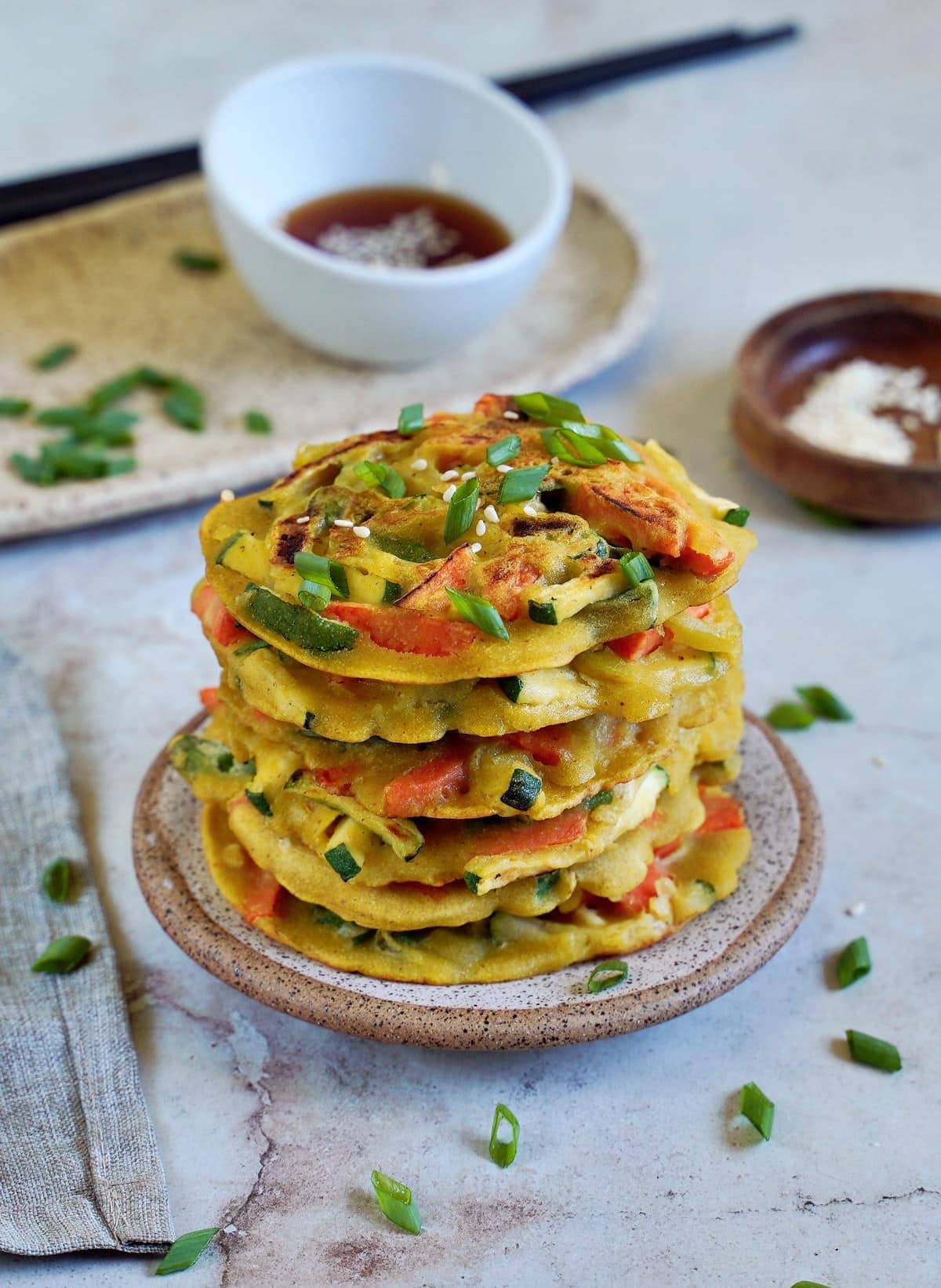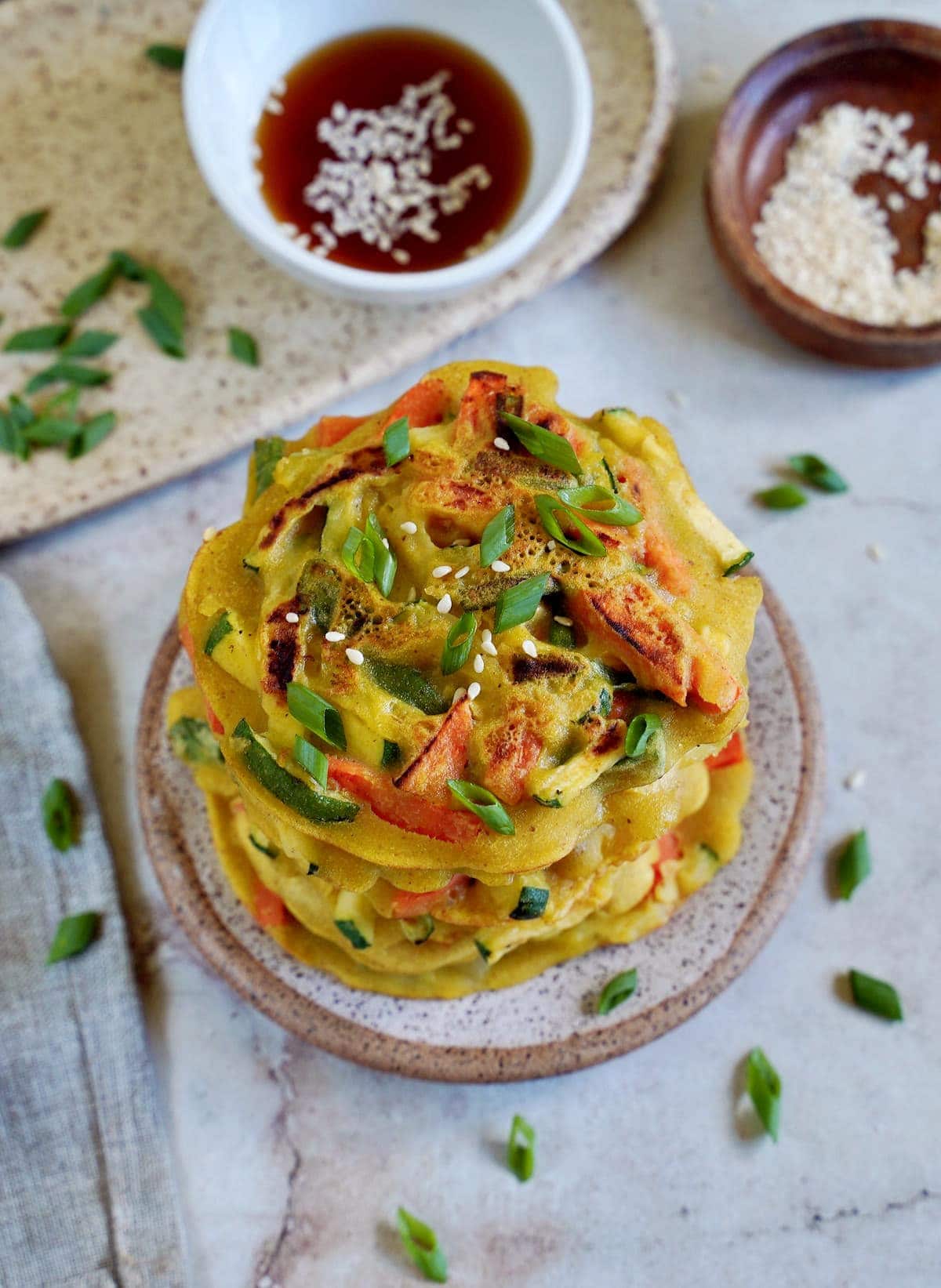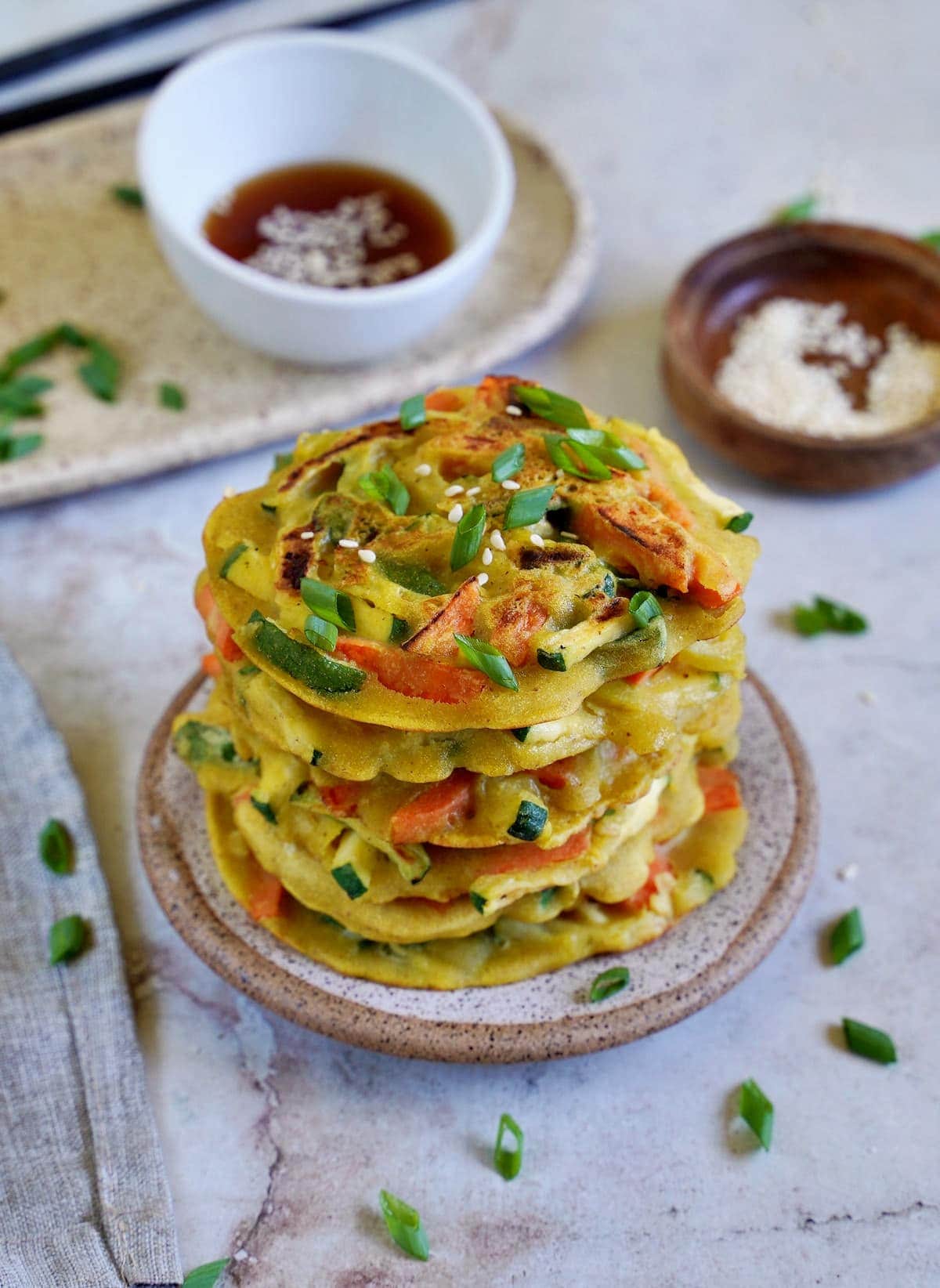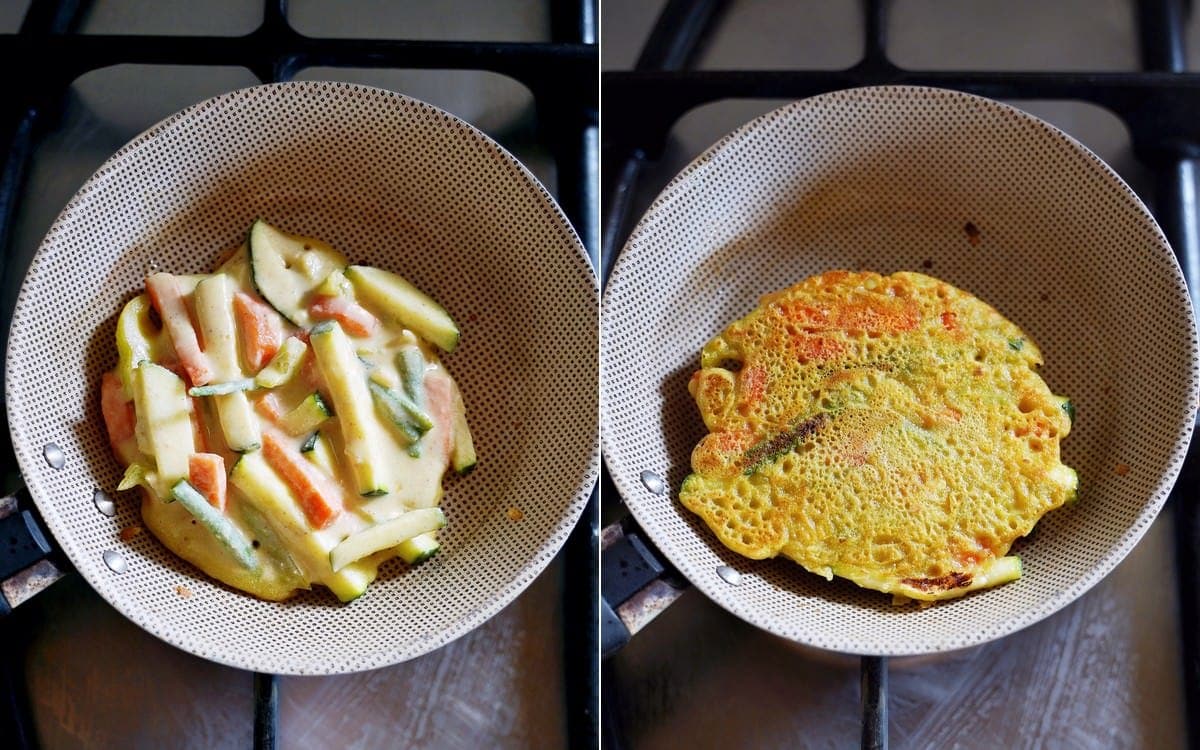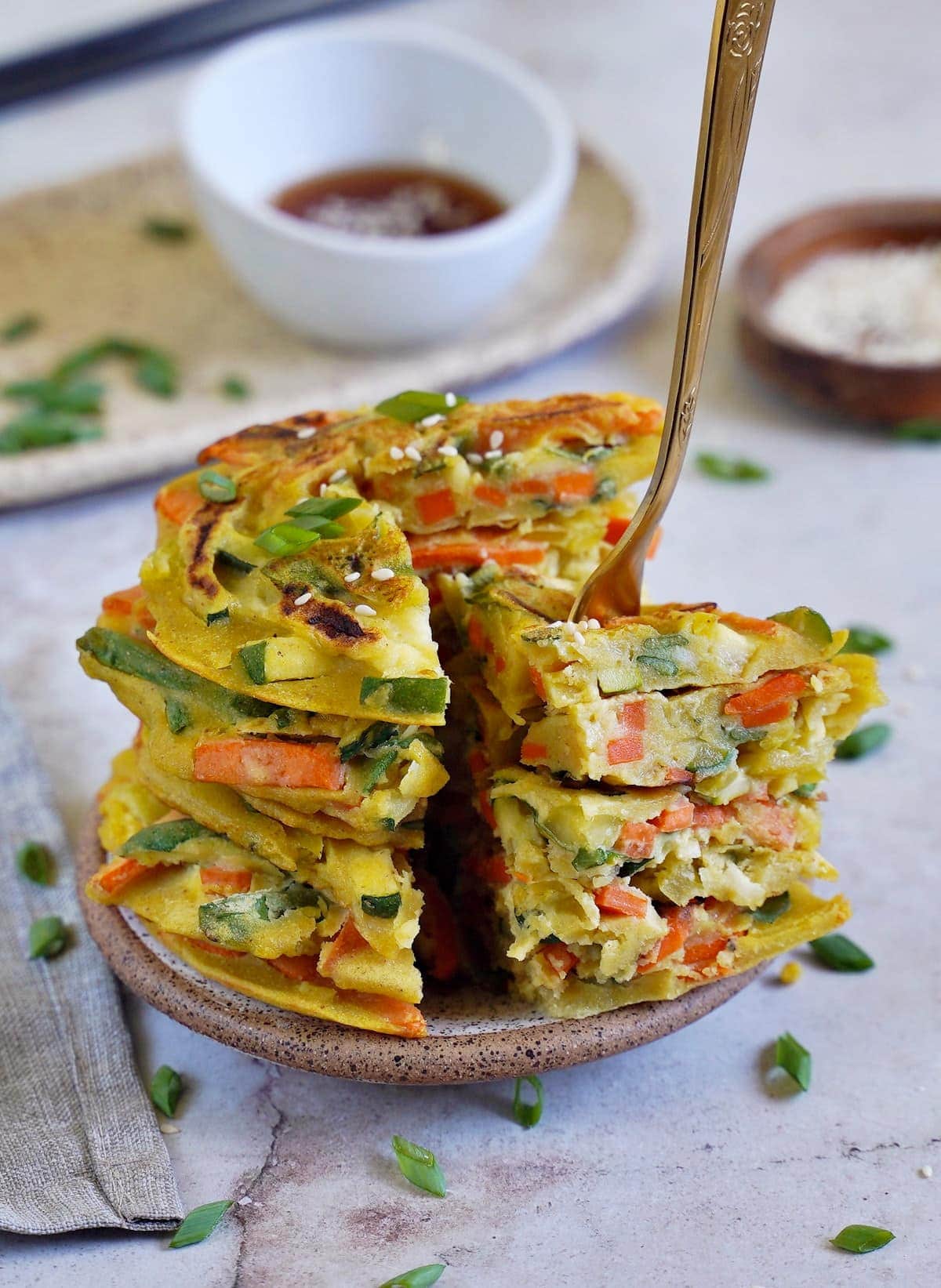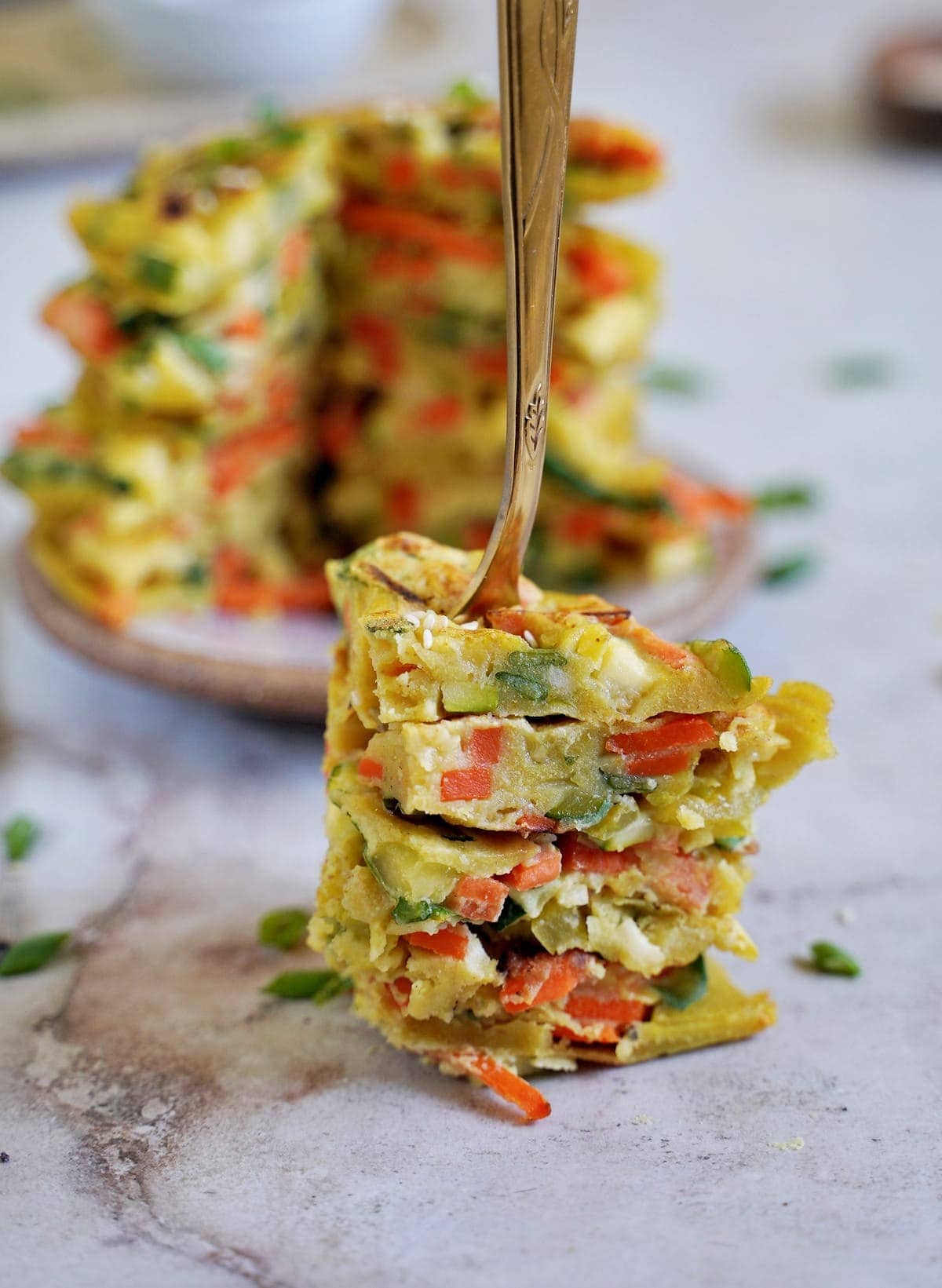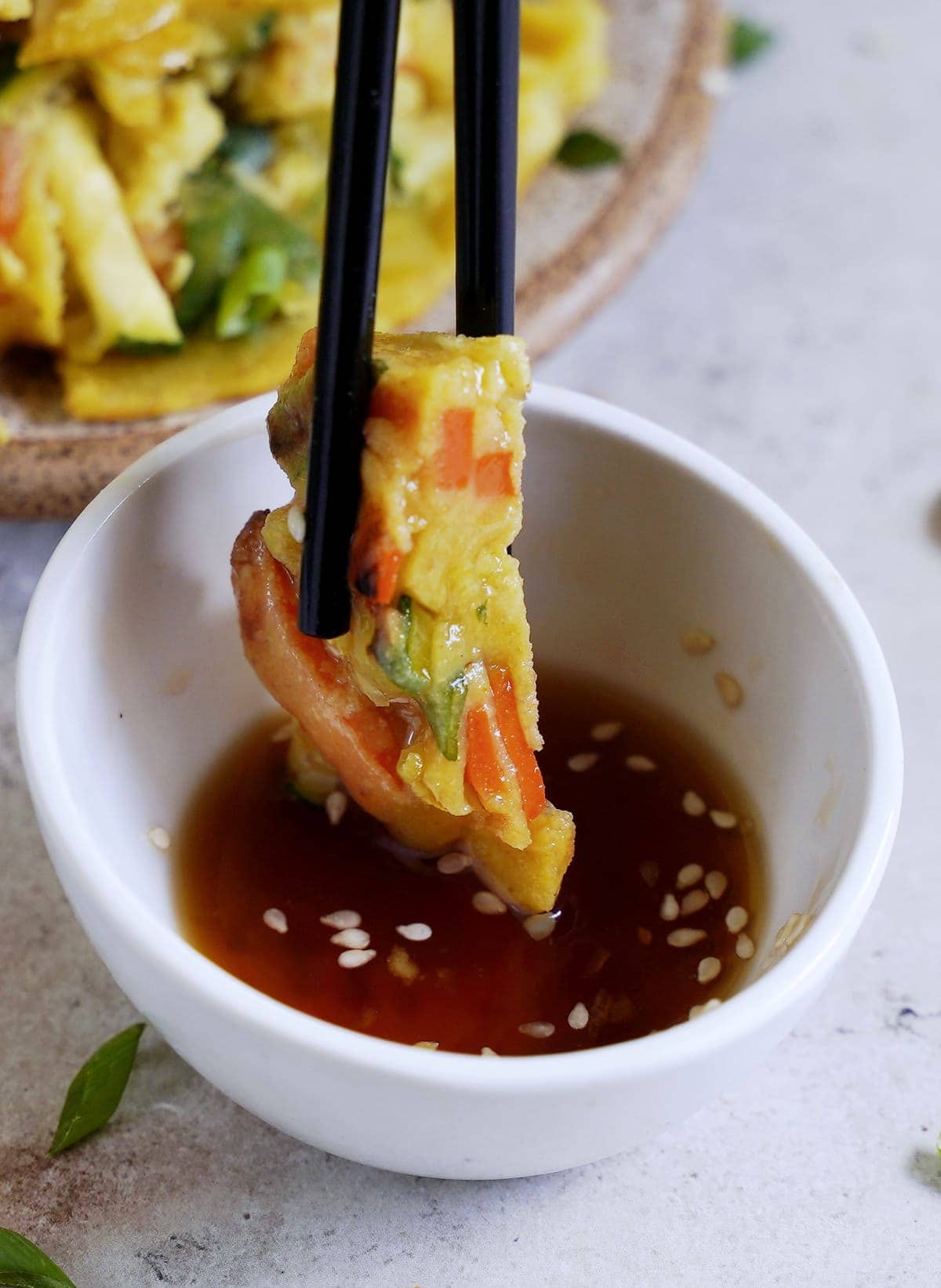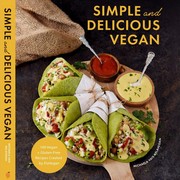I’ve never let being vegan stop me from enjoying omelettes, frittatas, quiche, and even scrambled eggs. However, unlike those recipes which rely on vegan egg alternatives, this Korean pancake recipe doesn’t require anything special (aka no tofu or chickpeas here)! Combine a simple flour mix with seasoning and water for a quick and simple pancake batter! Pajeon lies somewhere between regular pancakes and veggie fritter, combining the flavorful mixed vegetable and scallion filling with a pancake batter for small ‘fritter’ sized scallion pancakes that are perfect for enjoying as an appetizer or side! This vegetable and scallion pancake recipe has officially joined the ranks of some of my favorite Asian-inspired, veggie-packed quick meals. Vegetable chop suey, vegan lo mein, and Japanese fried rice – each one is hearty, wholesome, and packed with nutrition without tasting too ‘healthy’. That’s my kind of dish!
What is Pajeon?
Pajeon is a type of Korean pancake (buchimgae) or fritter (jeon) that contains scallions as the main ingredient (‘pa’ means scallion, so pa-jeon = scallion fritter/pancake). Traditionally, these savory scallion pancakes (aka green onion pancakes) are made with egg batter and combined with veggies, seafood, and/or meat. However, my version of this Korean pancake recipe is 100% meat-free, uses mixed veggies, and uses a gluten-free, dairy-free pancake batter!
The Ingredients and Substitutions
The Korean Pancake Batter
Flours: I used a combination of white rice flour, buckwheat flour (which is gluten-free), and cornstarch (or potato starch) to make up my homemade Korean pancake mix. The rice flour and cornstarch help yield wonderfully crispy savory pancakes. Seasonings: I used a combination of salt, turmeric powder, cayenne pepper (for heat), and Kala Namak (optional – but adds a slightly ‘eggy’ flavor like an egg version). Water: To make up the pancake batter. Oil: Just a little added to the batter will help yield even crispier pancakes. You can add a little extra flavor by using garlic-infused oil or a combination of olive oil with a drop of sesame oil. Vegetable Umami: I used ‘Yondu’ for this pajeon recipe. Use tamari, soy sauce, or coconut aminos as a sub.
The Veggies
Carrot: Finely sliced Scallions: Roughly chopped Green pepper: Sliced Zucchini: Finely sliced Garlic: Minced
For the full ingredients list, measurements, complete recipe method, and nutritional information, please read the recipe card below.
How to Make Korean Scallion Pancakes (Pajeon)
Step 1: Prepare the pancake batter
First, add the dry ingredients (the flour mix and seasonings) to a bowl, then add the wet ingredients and whisk to combine.
The batter shouldn’t be too thick – somewhat like but slightly looser than American pancake batter. Add a little more water if necessary.
Then, stir in the prepared and finely chopped veggies and scallions and mix well.
Alternatively, you can slice the scallion slightly larger into 1-2″ pieces and keep all the vegetables and batter separately. Lay out the veggies and scallions as you’d like in little pancake shapes in your skillet (you can even allow them to slightly crisp up for 1-2 minutes before adding the batter), then pour over just enough batter to cover the veggies. This is a traditional pajeon cooking method.
Step 2: Pan Fry the Pajeon
Heat a little oil in a large skillet until warm. Then, add a few tablespoons of the batter per pancake into the pan. Fry the pancake with a lid until golden underneath (lift the side slightly with a spatula to check), then flip to fry the other side until golden and cooked through. Then repeat this with the remaining batter.
Once all the pancakes are ready, serve them up with some additional vegetable umami (or soy sauce) and enjoy! Of course, you could also enjoy the pajeon with a simple Gyoza-style soy-based sauce or this Chinese brown sauce.
How to Make-Ahead and Store?
Make-Ahead: The prepared batter can be covered and stored in the refrigerator for 2-3 days. In fact, chilling the batter can lead to even crispier scallion pancakes. To Store: Any leftover green onion pancakes can be stored in an airtight container in the refrigerator for several days (3-4 days). To freeze: These savory pancakes can be frozen in batches. First, lay them on a tray (side-by-side) and freeze until solid, then transfer to a freezer-safe bag/container for up to 2 months. To reheat: Reheat them in a skillet with a bit of oil to help the pancake crisp up again slightly. For larger batches of the scallion pancakes, wrap small stacks in foil and reheat them in the oven at 350ºF/175ºC. Check after 10 minutes; however, the time will vary based on the size of the stack. You could also broil the pajeon for crispier results.
Can I make Korean pancakes with all-purpose flour?
Korean pancake mix traditionally combines rice flour, cornstarch, and all-purpose flour. For this gluten-free version, I’ve used buckwheat flour in place of regular AP flour, but it should work fine with AP flour, too.
Can I use other vegetables?
This pajeon recipe is pretty versatile, so use whatever veggies you have on hand that don’t require a lot of cooking. I recommend shredded cabbage, mushrooms, leek, other peppers, beansprouts, etc. Note that certain veggies like mushrooms and leeks may require a minute or two of sautéing before you add them to the batter.
Recipe Notes
Adjust the heat: If you prefer the pajeon to be completely mild, then omit the cayenne. Alternatively, up the spice with the addition of red pepper flakes or simply increasing the amount of cayenne. Seasonings: For a more traditional Korean pancake mix flavor, you can add a little garlic powder (and optionally onion powder) to the pancake batter. Chill the batter: If you have time, allow the batter to chill in the refrigerator for 30 minutes before cooking the Korean scallion pancake/s. Cold batter will sizzle up more in the pan and create a crispier pancake. Making larger pancakes: Rather than making smaller ‘fritter-like pancakes, you can make larger pan-sized pancakes. The amount will vary on the size of your pan. In any case, I recommend covering the pan with a lid to allow the batter to cook through quicker (without burning the underside of the pancake). Don’t omit the starch: The batter won’t become crispy without it, and no one wants a soggy pancake.
More Vegan Fritter and Pancake Recipes
Red lentil fritters Millet fritters with creamy sauce Vegan hash browns Apple cinnamon pancakes Caramel-stuffed chocolate pancakes Blueberry sheet-pan pancakes
If you try this savory Korean pancake/ pajeon recipe, I’d love a comment and ★★★★★ recipe rating below. Also, please don’t forget to tag me in re-creations on Instagram or Facebook with @elavegan #elavegan – I love seeing them
